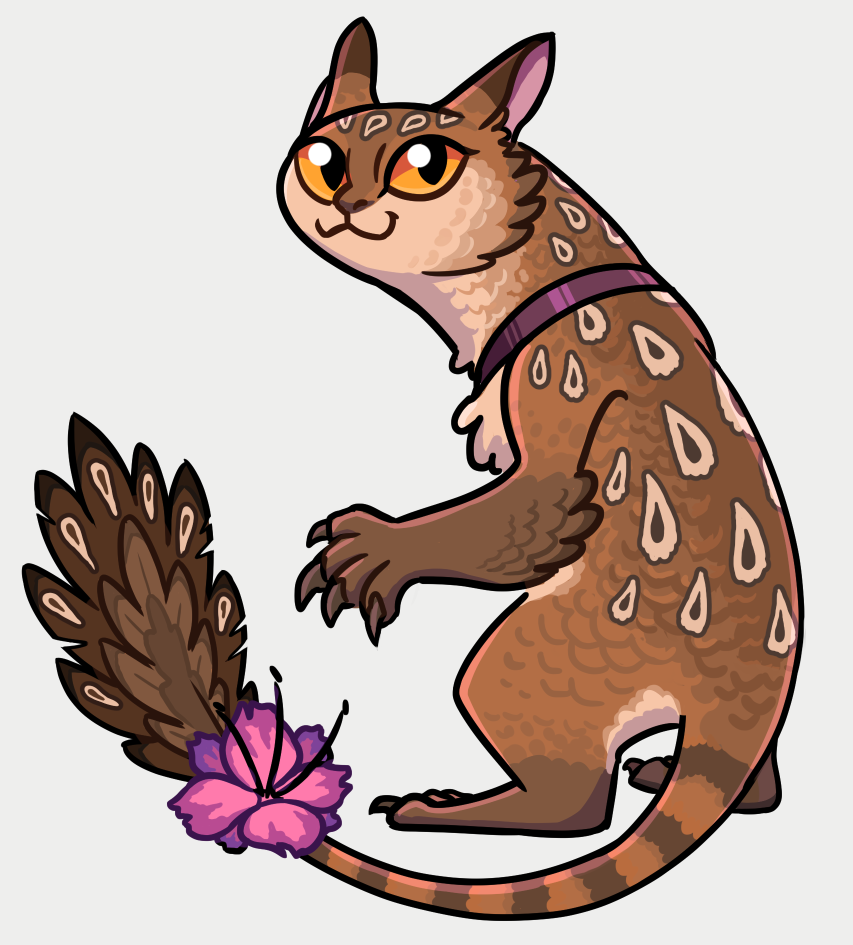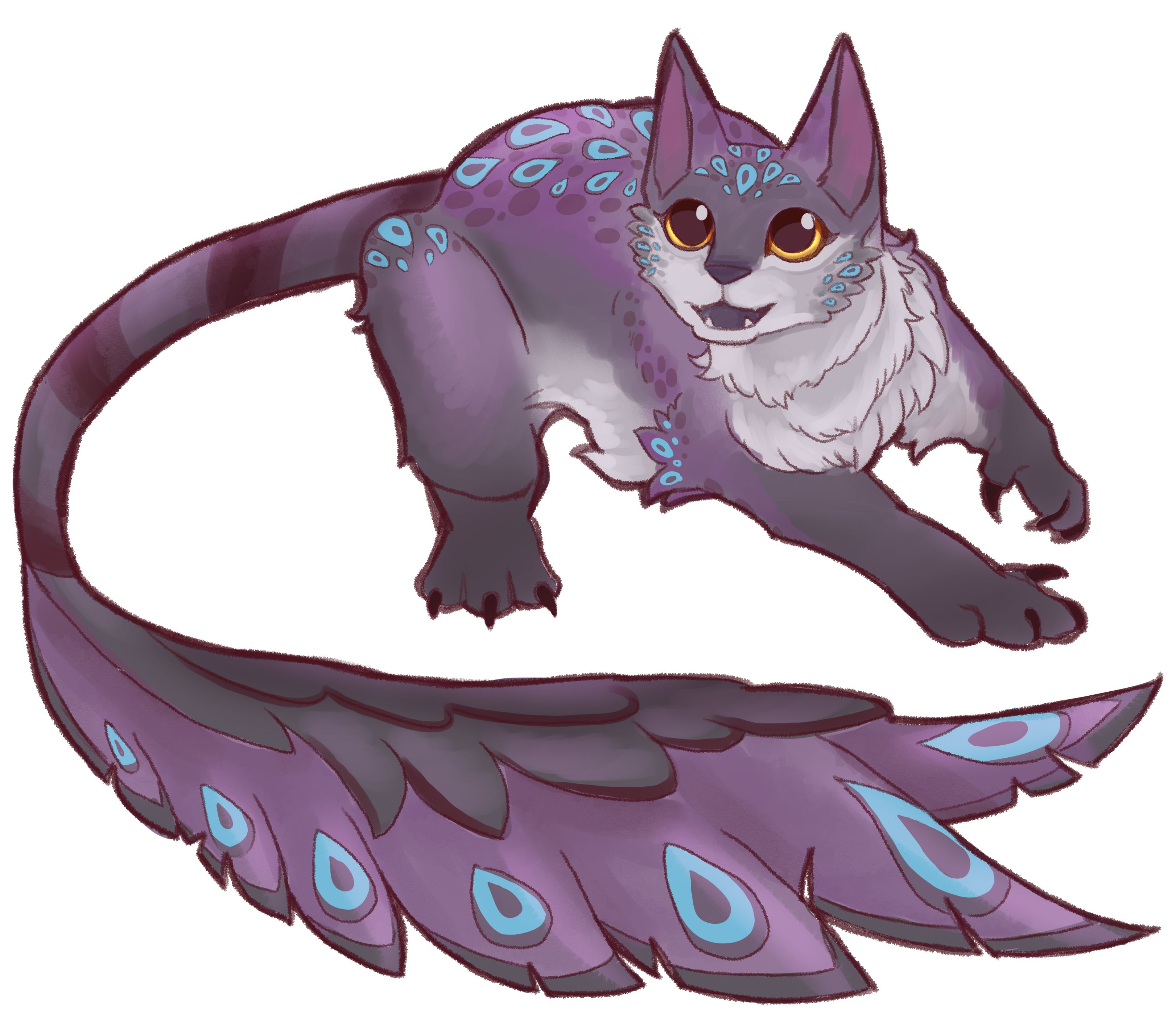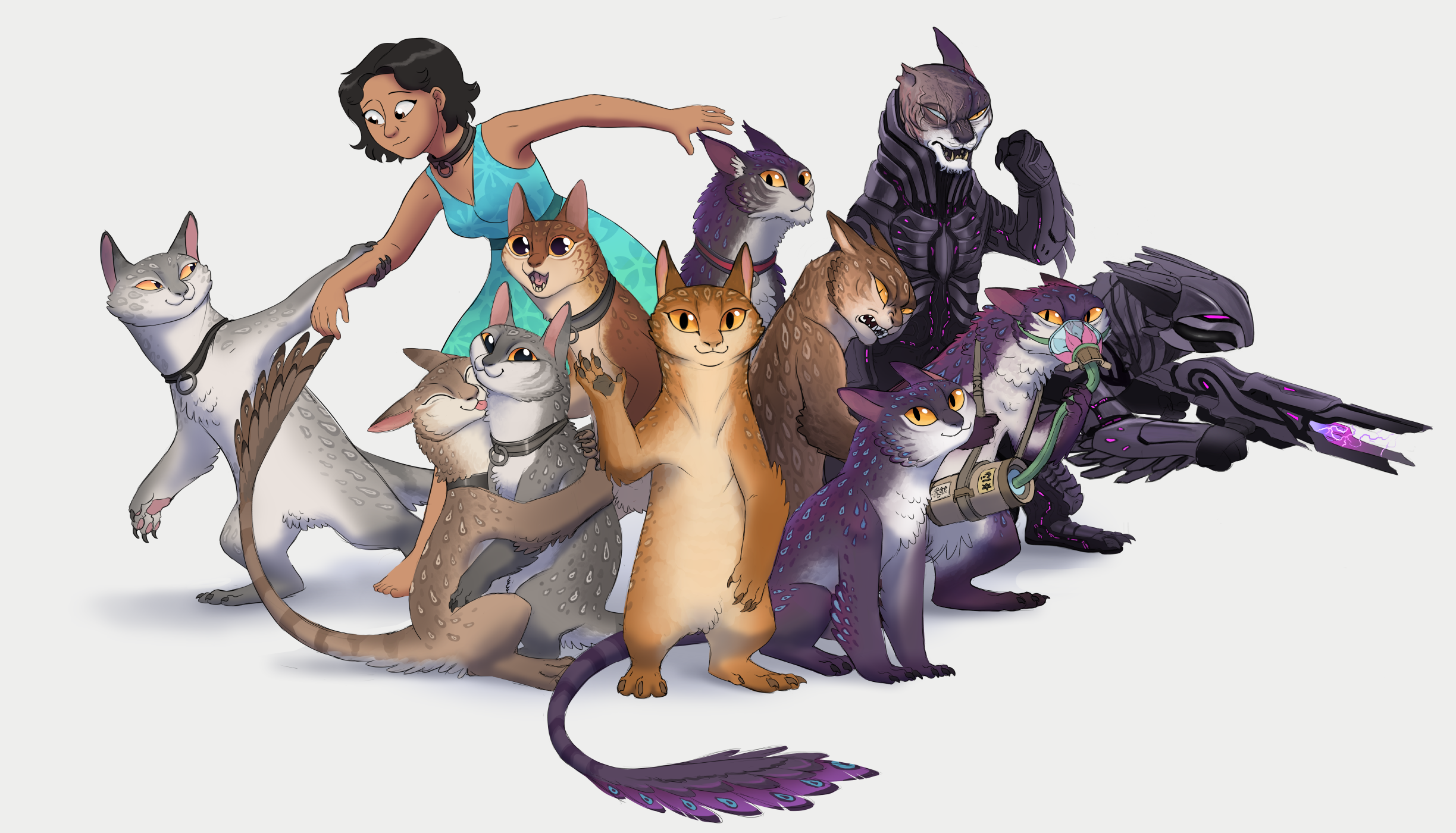"It is common knowledge that one cannot, for ethical reasons, rise to disturb a cat who sleeps in one’s lap, Astrid knew. The not-quite-cat currently sleeping in her lap, however, had her trapped in a much more physical sense. It was simply too heavy to move."
Promilie's Florets of a Feather, chapter 4
The khetari are feathered, cat-like sophonts endemic to the Milky Way galaxy. Though only 3 to 4 feet tall, their short stature belies an extraordinary strength and weight. Hailing from a large and unusually dense world called Söen, the khetari are adapted for gravity far higher than that of Terra, making them much tougher and heavier than they look.
¶ Quick Info

Home System: Sömar
Home Planet: Söen, a large and dense world of low mountains, shallow oceans and deep canyons. Most of the planet's land masses are primarily dominated by deserts, grassy plains and dense brushland.
Native Gravity: 2.6g
Year Length: 482 Terran standard days
Lifespan: The natural wild khetari lifespan is between 60-80 years, but with the aid of xenoveterinary science independents can easily double that time. Implanted florets can potentially live for nearly three centuries.
Circadian Rhythm: ~26 hours
Domesticated: 2230s CE (about three centuries prior to the Human Domestication Treaty)
Names: Söen is a large and culturally diverse world, meaning there are easily as many khetari languages and naming conventions as there are terran ones.
Examples in the most commonly spoken languages: Yobai, Keeni, Toi-na, Gäraf, Juni.
¶ Appearance & Physiology

Khetari have broad feline heads with long, triangular ears. Their powerful jaws and conical teeth are designed to crush the tough chitin of the insects and crustaceans that make up their diet. They have relatively long, thick necks and sloped shoulders, with wide arms ending in four paw-like fingers, tipped with non-retractable talon-like claws. Relative to terran cats, their torsos are short and wide, ending in a long, thick and somewhat stiffened tail with a feathered fan at its tip. The tail fan is heavily used to convey body language, such as quivering when the khetari feels joy or held high and fanned out when they feel threatened. Khetari lack eyebrows and use their ears to emote in their stead. They have digitigrade hind legs and are equally comfortable with bipedal or quadrupedal locomotion.
Khetari display sexual dimorphism through the coloration of their plumage. Males are more colorful than females, and bright colors are often culturally associated with masculinity. Females come in countershaded tawny browns, reds or grays, with white teardrop-shaped spots running down their backs. Males have a countershaded bluish or purplish gray- to black coat with bright cyan spots. Both sexes have an iridescent sheen in the ultraviolet spectrum, though it is much more apparent in males. They have full color vision, can see into the ultraviolet spectrum and have excellent night vision.
Having originally evolved in the dry, dusty interior of Söen’s largest continent, khetari take dust baths to keep dirt and parasites out of their feathers. The ventral edges of their claws are covered in tiny bristle-like microstructures, which they use to preen their feathers. Their dense bodies make it very difficult to swim, so they have an instinctive aversion to deep water. Although affini habitats tend to be immaculately clean and sanitary, and thus reduce the need for dust baths, a sand pit is great for enrichment. They love to dig!
Because of their powerful and heavy bodies, khetari quickly learn to be very delicate with other xenosophonts. With weight and strength comparable to a terran tiger compacted into such a small frame (weighing in at anywhere between 120-260 kg), khetari florets are usually closely monitored by their owners when interacting with other species. They like to love bite as a sign of affection, so a xenodrug-soaked chewing vine is a great distraction to avoid accidental xenosophont injury.
Their dense bodies do not handle low gravity environments well in the long term without haustoric implants or other biotech, so a large majority of independent khetari still live on Söen or on specialized fast-spinning habitation rings.
¶ Culture & History

Khetari are highly social, competitive and rambunctious sophonts. They evolved to live in competitive social dominance hierarchies, with a constant drive to establish and maintain pecking orders. Once a hierarchy has been established, khetari are known to pack-bond very tightly within their immediate social groups, but remain neutral or even aloof to those outside of it. Because of this, affini owners sometimes maintain groups of up to ten pinnate khetari florets, though smaller groups of three to six are more common.
Forced grooming of lower rank individuals is a common way for khetari to maintain dominance and reinforce social bonds, which is a behavior that affini delight in indulging.
Khetari love competition and will jump at the chance to turn just about anything into a contest!
Prior to their domestication, the khetari homeworld was home to thousands of sovereign feudal countries. Democratic systems of government were sometimes attempted but typically didn't last very long, as their dominance-based social structure quickly gave rise to warlords and tyrants. Warlords maintained their power through overt aggression, and being heavily battle-scarred was often considered a symbol of status. The average feral khetari lived short, brutal lives rife with violence and social instability.
¶ Domestication

Eventually, the khetari as a species achieved a level of technological advancement that surpassed that of the Terran Accord at the time of the Terran-Affini conflict. However, because of the deep gravity well of Söen they could not easily reach space with chemical rockets and were almost entirely confined to their homeworld. Around the 2230s, the khetari began to experiment with hypermetric technology, including weaponry, which inadvertently alerted the Affini Compact to their existence, leading to a quick and somewhat dramatic pacification campaign.
The peoples of Söen kept livestock in the form of large beetle-like animals, but they were kept purely for consumption and labor. The concept of keeping animals as pets was wholly foreign to them, so when the Affini Compact announced their intent to domesticate them they considered it an existential threat. Despite this, most of the nations of Söen did not band together against their common foe, choosing instead to opportunistically attack each other over real or perceived weaknesses presented by the alien invasion.
The khetari were formidable combatants on the ground, but they had no response to the Compact’s orbital spaceships and vastly superior technology. Within the space of a year and a half the entire planet was pacified and domesticated.
The khetari’s most detrimental cultural vice was their propensity for warfare and violent domination, which the Compact put strong emphasis on dismantling. In the absence of violence and dominance, the khetari found other outlets for their competitive nature, leading to a cultural boom in fields like the arts, crafts and nonviolent sports. With the aid of affini technology and infrastructure they gained the opportunity to explore the galaxy, and in the modern day khetari can be found alongside their affini wardens even as far out as Rinan-Terran space.
